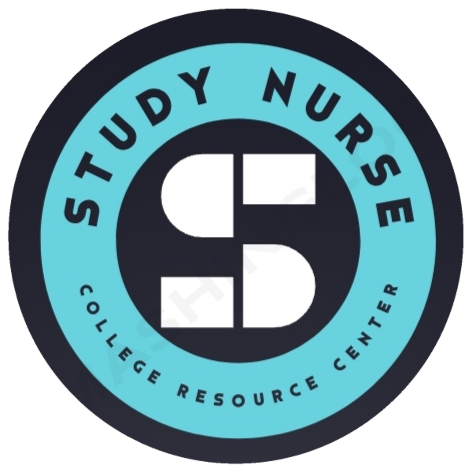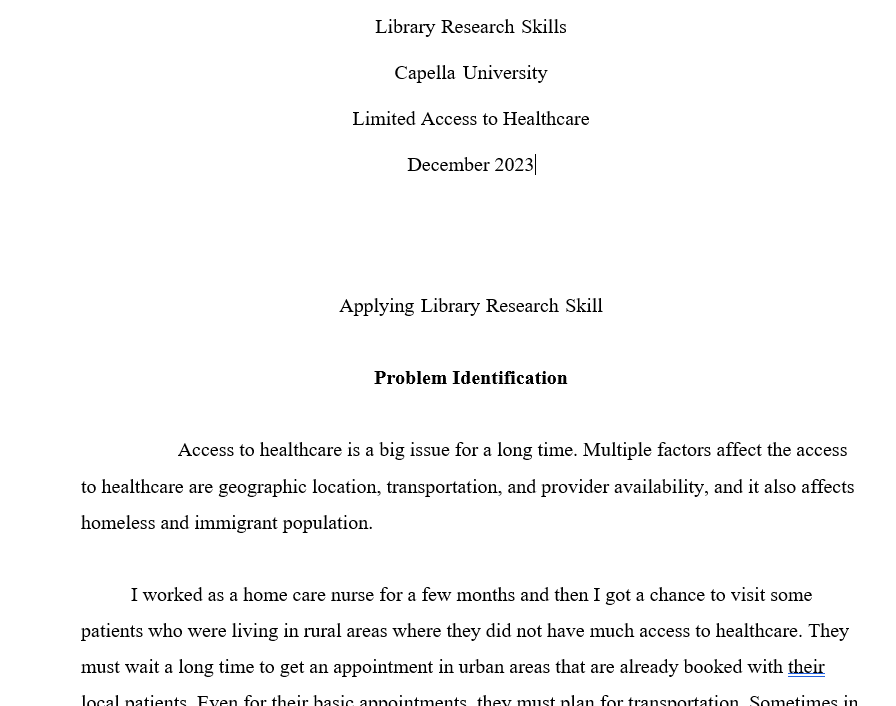Capella University
NHS4000: Developing a Health Care Perspective
Dr. Coleman
September 26, 2023
Applying Ethical Principles
Issues of ethics occur in the healthcare field constantly and health care workers often rely on a standard set of principles and methods to make decisions fairly and ethically. Commonly known as and accepted throughout the healthcare field as the four principles of healthcare ethics, these include autonomy, beneficence, nonmaleficence, and justice. This guide to decision-making ensures that patients are receiving equitable, high quality, and ethical care.
Overview of the Case Study
At Hopewell Hospital, the director of clinical services is E.L Straight. Dr. Cutrite is a long-tenured physician, who due to time has had a decline in clinical performance. For this reason, Mr. Straight is faced with the decision to lessen the privileges of Dr. Cutrite. While the course for implementing this change is not yet complete, Dr. Cutrite has made a significant error.
It has been brought to the attention of Mr. Straight, by a supervisor, that during a procedural count of surgical supplies, a syringe cover was unaccounted for at the completion of the surgery. At first response, Straight suggests bringing the patient, Mrs. Jameson back in for surgery under the false pretense that they would be simply inspecting her incision and sutures. The supervisor informs Mr. Straight that this is not a possibility, as Mrs. Jameson has already been released from the hospital. Dr. Cutrite has advised that he does not want any intervention to take place, as he claims the syringe cover will cause slight discomfort, but no serious effects. Mr. Straight decides to call the chief of surgery to get insight on what to do, without revealing that the incident has occurred. The chief of surgery elucidates that while the syringe may only cause discomfort, no one can be sure that that will be the only outcome. As a health care professional, Mr. Straight is now faced with the ethical dilemma of whether to perform his moral obligation to inform Mrs. Jameson of the surgical error or risk his own position by going against a respected and powerful healthcare member of the hospital. While Mr. Straight and Dr. Cutrite are affected by the ethical issue at hand as it pertains to their positions at the hospital, Mrs. Jameson could have health risks if an ethical decision is not made on her behalf.
Analysis of Ethical Issues in the Case Study
In “The Missing Needle Protector,” the ethical dilemma is presented by the fact that an object is left inside a patient’s body after a surgery is performed, and the director of clinical services, E.L Straight must decide how to move forward. At one point, he inquires on the opinion of the doctor who performed the surgery and from the chief of surgery. Straight is aware that a decision must be made and will either favor the patient, Mrs. Jameson, or himself and the wishes of the physician, Dr. Cutrite. Dr. Cutrite suggested that the error will cause no life-threatening harm to the patient, and she should not be informed. The chief of surgery implies the same, however ends with stating that though that may be true, it is not certain. The chief of surgery is implying that there can be implications other than physical discomfort from leaving a surgical object inside of a patient’s body (Osborne, et al., 2021). The overall view of Dr. Cutrite throughout the hospital and the level of respect others there have for him creates an obstacle for the director. While his decision may affect the position of Dr. Cutrite and himself, Straight must still consider the possible outcomes for the patient.
Using the Ethical Decision-Making Model to Analyze the Case Study
To analyze the ethical issue in the case study, moral awareness, moral judgment, and ethical behavior can be evaluated, as they are part of a model known as the Ethical decision-making model. Moral awareness is when an individual recognizes that there is an ethical dilemma present. Moral judgment is deciding what is right and what is wrong. Both guide an individual to having ethical behavior. Ethical behavior is using those morals and judgments to make the right decision to resolve the ethical dilemma. E.L Straights moral awareness is seen by the fact that he recognizes that a decision must be made in whether an intervention is to occur with the patient or to let the object remain. His moral judgment is present when he seeks information regarding what Dr. Cutrite advises and what the chief of surgery advises. With these variables along with Straights obligation to uphold the four principles of ethical decision-making, ethical behavior will follow with his decision.
Effectiveness of Communication Approaches in the Case Study
Listening was at the forefront of communication in this case study. E.L straight was first able to recognize a dilemma when he listened to the operating room supervisor’s explanation of the error performed by Dr. Cutrite. He was able to get all the information necessary to know how and why it occurred. Not only was his active listening vital in understanding, but his asking of questions was able to further his analysis of the situation. Furthermore, Straight seeking the opinion of the chief of surgery allowed him to listen to another scenario, which was different from the advising from Dr. Cutrite. The chief of surgery allows Straight to realize that the outcome of not informing the patient could have negative results.
Contrastingly, the lack of verbal communication that was present in the case study proved to be ineffective on the part of Straight. The indirect communication with the chief of surgery did not allow for direction that could have been given. Straight may have been able to relay the information further to protect himself and the patient. Instead, he chose to ask the question as a hypothetical and without much backstory. The director also lacks in communication, where he could have spoken with Dr. Cutrite directly. This may have left the door open for alternative resolution and viewing of each perspective. Lastly, there was no communication with the patient, Mrs. Jameson. By not having open communication there, she was not able to be able to be informed and make the decision for herself.
Overall, the presence of listening was effective as a foundation for Straight in the case study. However, the greater lack of communication seems to have been more of a setback. Straight must rely on his intrapersonal communicating to resolve the ethical dilemma, as opposed to using interpersonal communication to involve all of those involved and better apply the four principles of ethical decision-making. One of the lesson’s health care professionals can learn from a case like this is communicating with those involved. In other words, health care professionals should practice with veracity. The absence of information can be viewed as being dishonest and untrustworthy.
Resolving the Ethical Dilemma by Applying Ethical Principles
Health care dilemmas are often resolved using the four ethical principles, autonomy, beneficence, nonmaleficence, and justice. Autonomy is that every individual has the right to make their own decisions regardless of another views or opinions. Beneficence refers to the health care professional having the best interest of others at hand. Nonmaleficence is acting in a manner that prevents harm and justice refers to being fair and equal among all.
This case presents E.L Straight with an ethical dilemma involving three of the four principles of ethics. Those include autonomy, beneficence, and non maleficence. By employing these three principles, E.L Straight would be able to resolve the matter with ethical behavior. Autonomy is a matter in this case because in the end, the patient, Mrs. Jameson, should be informed of the facts and be able to decide whether she would like to have surgical intervention or have it remain. E.L Straight was able to hear the opinion of Dr. Cutrite and the chief of surgery and will then get to decide how he moves forward, however, when considering autonomy, Mrs. Jameson has the right to make that decision. Beneficence and nonmaleficence could help with the resolution in that Straight has a duty to act in the best interest of the patient and attempt to prevent harm. By putting aside his own desire to protect his position in the hospital and the intimidation from going against Dr. Cutrite, he would be acting in the best interest of the patient instead of himself. Furthermore, by applying beneficence and autonomy, Straight would be portraying nonmaleficence by allowing those principles to bring forth the best outcome to not harm the patient by deciding on his own to leave the missing needle cover in her body.
This solution makes E.L Straight more effective in his organization by presenting him as someone who respects the duties he has to patients as a health care professional, regardless of his status, bias, and organization. Often times healthcare professionals find it difficult to remain ethical based on the pressures of their organizations (Zahedi, et al., 2021). This will foster in more effective professional collaboration as well as it will show that again, regardless of someone’s status in the hospital, the patients are at the center of care, and all health care professionals have a duty to uphold.
Conclusion
Issues of ethics in health care can be navigated through and resolved by applying the four principles of ethics. In “The Missing Needle Cover,” E.L Straight must decide between upholding his duty of autonomy, nonmaleficence and beneficence by informing a patient of an instrument left inside her body after surgery or succumbing to the pressure of a respected physician and risk jeopardizing his position at Hopewell Hospital. The suggested solution would uphold the duty to give Mrs. Jameson the right to decide, attempt to cause no harm, and have her best interest in mind.
References
Capella University (2022) NHS-FPX4000: Developing a health care perspective. Capella
Website.https://media.capella.edu/CourseMedia/nhs4000element18655/wrapper.asp
Osborne, S. R., Cockburn, T., & Davis, J. (2021). Exploring risk, antecedents, and human costs
of living with a retained surgical item: A narrative synthesis of australian case law 1981–
- Journal of Multidisciplinary Healthcare, Volume 14, 2397–
- https://doi.org/10.2147/jmdh.s316166
Zahedi, Z., Rahnama, M., Naderifar, M., Abdollahimohammad, A., & Shahrakiwahed, A. (2021). The effect of teaching the principles of nursing ethics on the moral turmoil of nurses: A quasi-experimental study. Palliative Medicine, 13(1), 32–36. https://doi.org/10.5114/pm.2021.104035

